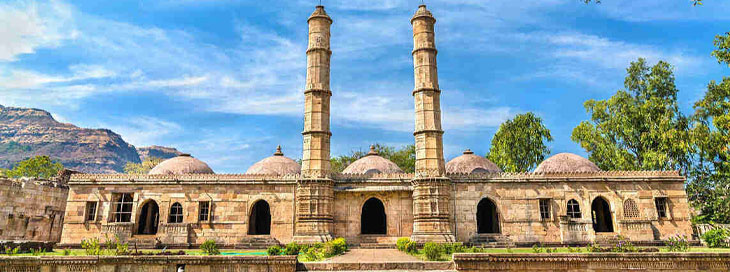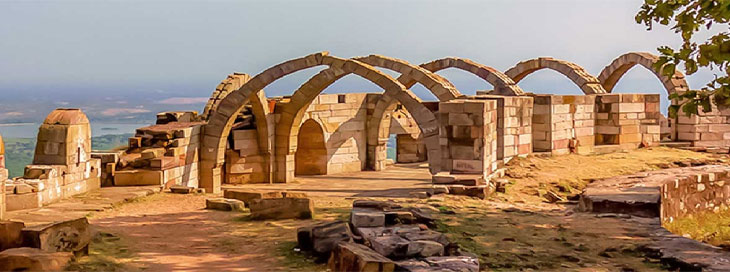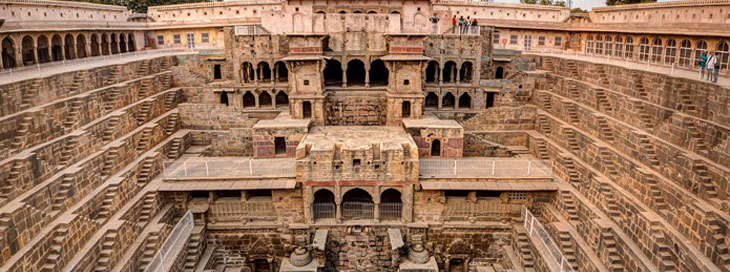


Gujarat, which is well-known for its wealth and tourism potential due to its coastal region, is also surprising people with its architectural marvels. The state’s architecture spans three distinct historical periods. The first is the contemporary architecture that emerged from Jainism as the state’s predominant religion. The second is Hindu architecture, which flourished from the eleventh to the thirteenth centuries. Hindu architecture generally consists of an octagonal, closed, pillared hall that comes before a square hall with a sikhara on top. One example of this kind of Gujarati temple is the Sun temple in Modhera.
A Max Vacations staff will greet you upon arrival and take you to your accommodation. Mumbai is the city that never sleeps, so if you’re feeling youthful and invigorated, this is the place for you. Overflowing with restaurants, nightclubs, and discotheques In its true form, Mumbai is comparable to Las Vegas in India. Thus, you are cordially welcomed to Mumbai, the city of wonders. Spend the night in Mumbai
Enjoy the full-day sightseeing trip of Mumbai this morning. Visit Elephanta Island in the morning, which is about 10 kilometers from Mumbai. The Elephanta Island Caves are a collection of rock-carved temples that date back to the sixth and seventh centuries. Visit the Princess of Wales Museum, Kamla Nehru Park, the Gateway of India, and the Hanging Gardens after that. The plan for the evening is to drive by Marine Drive, one of the city’s most exquisite and attractive driving lanes, and reach Chowpati Beach. Spend the night at the hotel.
Transfer to the airport to catch the aircraft to Baroda after breakfast. Meet and greet with a Max Holidays representative upon arrival in Baroda. Visit the art galleries and museums after that. After that, we go roughly 47 kilometers from Baroda to Champaner. One of Gujarat state’s historic towns, it briefly served as the state capital in the sixteenth century. One of the UNESCO World Heritage Sites is the Pavagadh Archaeological Park. To view the traditional homes and artwork of the tribal communities, proceed to the Panchmahals district and Chhota Udaipur Taluka. As soon as you get to Chhota Udaipur, get directly to the hotel and check in for the night.
Take a car to Ahmedabad after breakfast. Ahmedabad is one of Gujarat’s biggest cities and is located next to the Sabarmati River. Our agent will take you to the hotel when you arrive. In the afternoon, take a city tour of Ahmedabad and stop by the Jama Masjid mosque, which was constructed in 1423 by Ahmed Shah. Visit Kankaria Lake, one of Ahmedabad’s largest artificial lakes, thereafter. During Mehmud Begda’s reign in 1501, Dada Hari Vav (stepped well) was constructed. The octagon-shaped step well was constructed as a place for travelers to unwind. Return to the hotel in the evening to spend the night there.
After breakfast, continue on the walking tour to see Ahmedabad’s havelis. Drive to Palitana later. Visit Lothal, which is 85 kilometers southwest of Ahmedabad, when traveling. Located near the Sabarmati River on the western side of the Gulf of Khambhat, Lothal is an ancient village rich in Indus Valley Civilization. Archaeological findings that shed light on the Indus Valley era are kept in a museum. During its migration from Sindh to the coast of Saurashtra to establish trading zones, the Indus Valley Civilization at Lothal was a focal point. The first two places in India where the Indus Valley Civilization was found were Lothal and Rangpur, both of which are roughly 75 kilometers away.
After breakfast, take a Palitana sightseeing tour. One of the holy Jain cities is Palitana. One of the main Jains’ pilgrimage sites, it is located around 85 kilometers southwest of Bhavnagar city and is well-known for its breathtaking temple sites. See the Jain temple complex located above Palitana on Shatrunjaya Hill. On a Jains’ sacred hilltop, the complex contains roughly 860 temples. Drive to Diu later. Check-in and hotel transfer upon arrival. at the afternoon, go to the 16th-century Portuguese Fort at Diu, a Union Territory run by the Indian government, which is located on the country’s west coast. During their magnificent dominion over Diu Island, the Portuguese constructed this fort. West of the fort is where the town is located. A subsequent visit
Go to Gir by car after breakfast. See the temples of Somnath while traveling. The Somnath Temple is located in Saurashtra, close to Veraval. It is one of the most well-known tourist destinations and is well-known for its twelve Jyotirlingas, or the gleaming Lingas, of the god Shiva. Afterward, drive on to Gir. Transfer to the hotel for the night upon arrival.
Proceed to Gir Lion Sanctuary and National Park after breakfast. One of the most well-known parks for the habitat of Asiatic lions. There are currently about 350 remaining, and they are all in Gir National Park. Drive to Gondal after touring Gir National Park. On the way, stop by Junagadh City, which is next to the Girnar hills. Junagadh translates to “Historic Old Fort” with accuracy. See the royal mausoleum complexes, the palace museum, and the Buddhist caves. After that, we’ll travel on to Gondal. When you get to Gondal, check out the Naulakha Palace from 1748 AD as well as other fascinating structures owned by the Gondal Maharajas.
After breakfast this morning, drive to Dasada and stop in the village to see the artwork created by local artists. After that, drive on to Dasada. Check-in and transfer to the hotel upon arrival. An evening journey to the Rann of Kutch, a desert wildlife sanctuary created in January 1972 to protect the remaining Indian wild ass (khar) population. Chinkara gazelles, blackbuck antelope, wolves, desert foxes, hyenas, jackals, nilgai antelope, desert cats, and caracals can all be found there. Around two feet of water cover this unexpected region during the monsoon season (July to September), partially burying it in snow. This region was once below sea level, but earth’s movements raised it and separated it from the Gulf of Kutch.
Drive to Balaram in the morning after breakfast, stopping along the way to see the eleventh-century Sun Temple in Modhera. Constructed in 1026 AD by King Bhimdev of the Solanki dynasty, Modhera is devoted to Lord Surya, the Hindu Sun God. It is comparable to Orissa’s Konark Sun Temple. Additionally, go to Patan to view the magnificent 11th-century step well artwork. After that Continue on to Balaram via Sidhpur, also called Sri Sthal or a “holy place”. Sidhpur is also thought to be situated at the Y-junction of the Ganga and Saraswati rivers. After that, keep driving to Balaram. Transfer to the hotel upon arrival and check in for the night.
After breakfast this morning, travel to Ahmedabad, stopping along the way to Taranga to see the 12th-century Shvetambar Jain temple, one of the Jain religion’s pilgrimage sites. It was constructed in 1121 by King Kumarpal of the Solanki dynasty. Additionally, take in the magnificent art of Vadnagar, the town of temples, giant gates, wells, and Vaavs. Previously, it was called “Vimalpur” in Dvaapar-Yuga, “Snehpur and Anandpur” in Treta-Yuga, and “Chamatkarpur” in Sat-Yuga. After that, keep driving to Ahmedabad. Direct hotel transfer upon arrival and overnight stay
Transfer to the airport to board the flight to your next location after breakfast. Even though your tour is coming to an end, the amazing memories will always be a part of you.